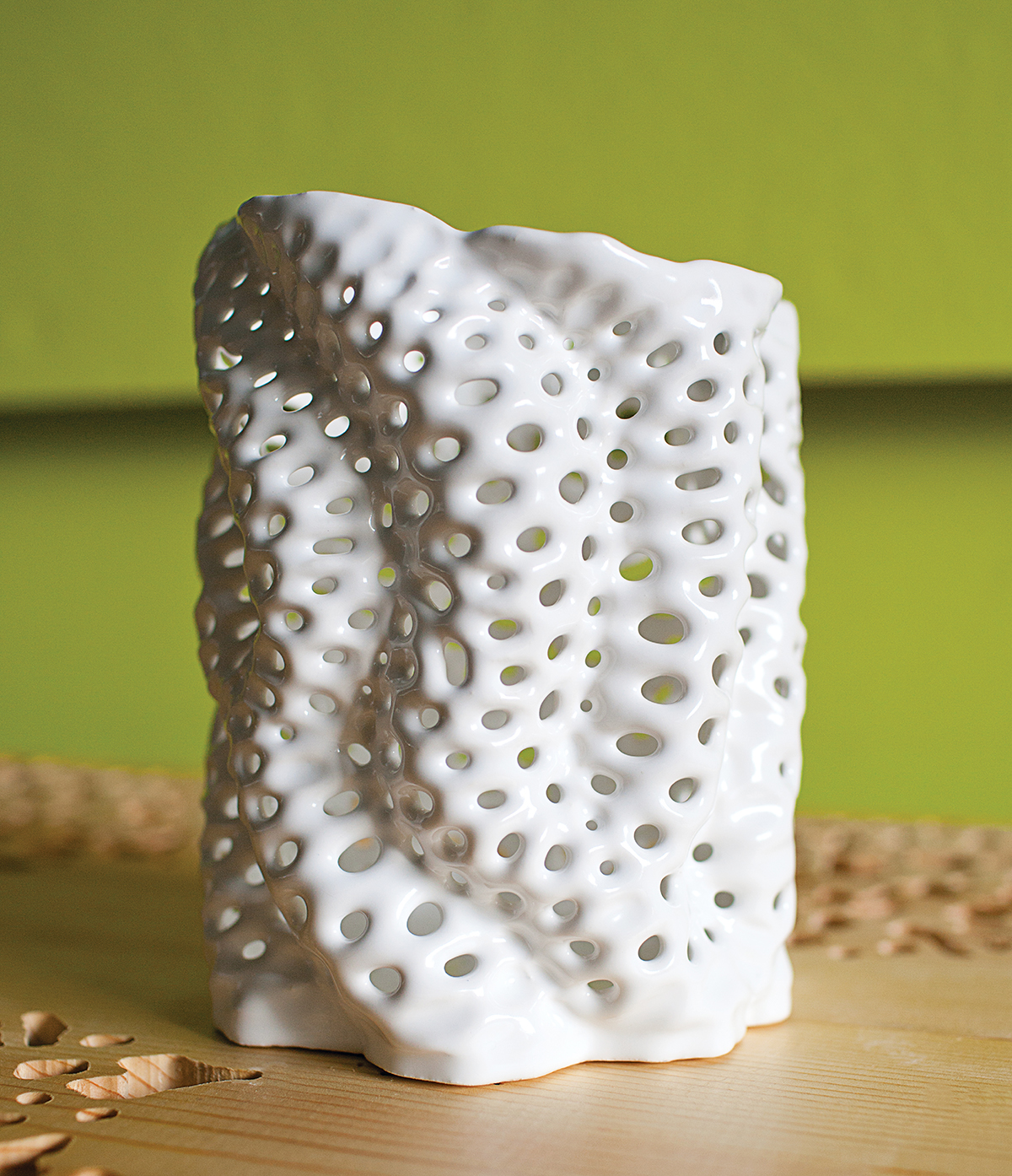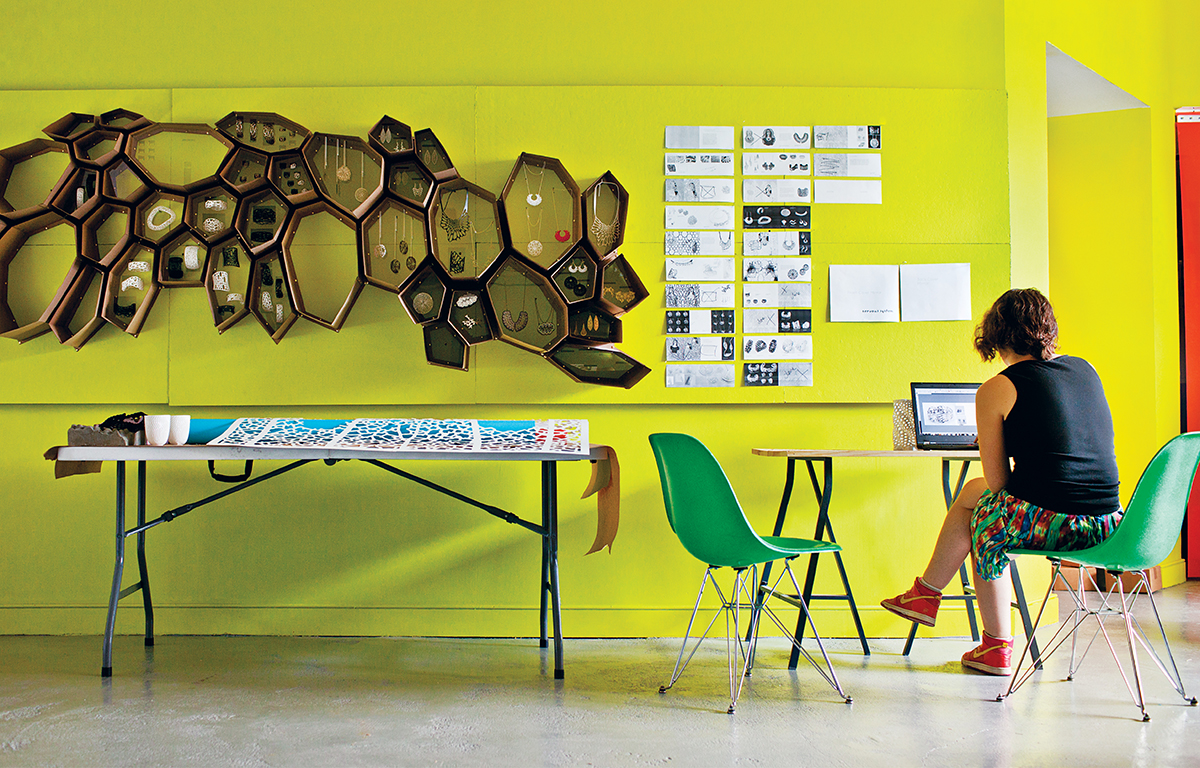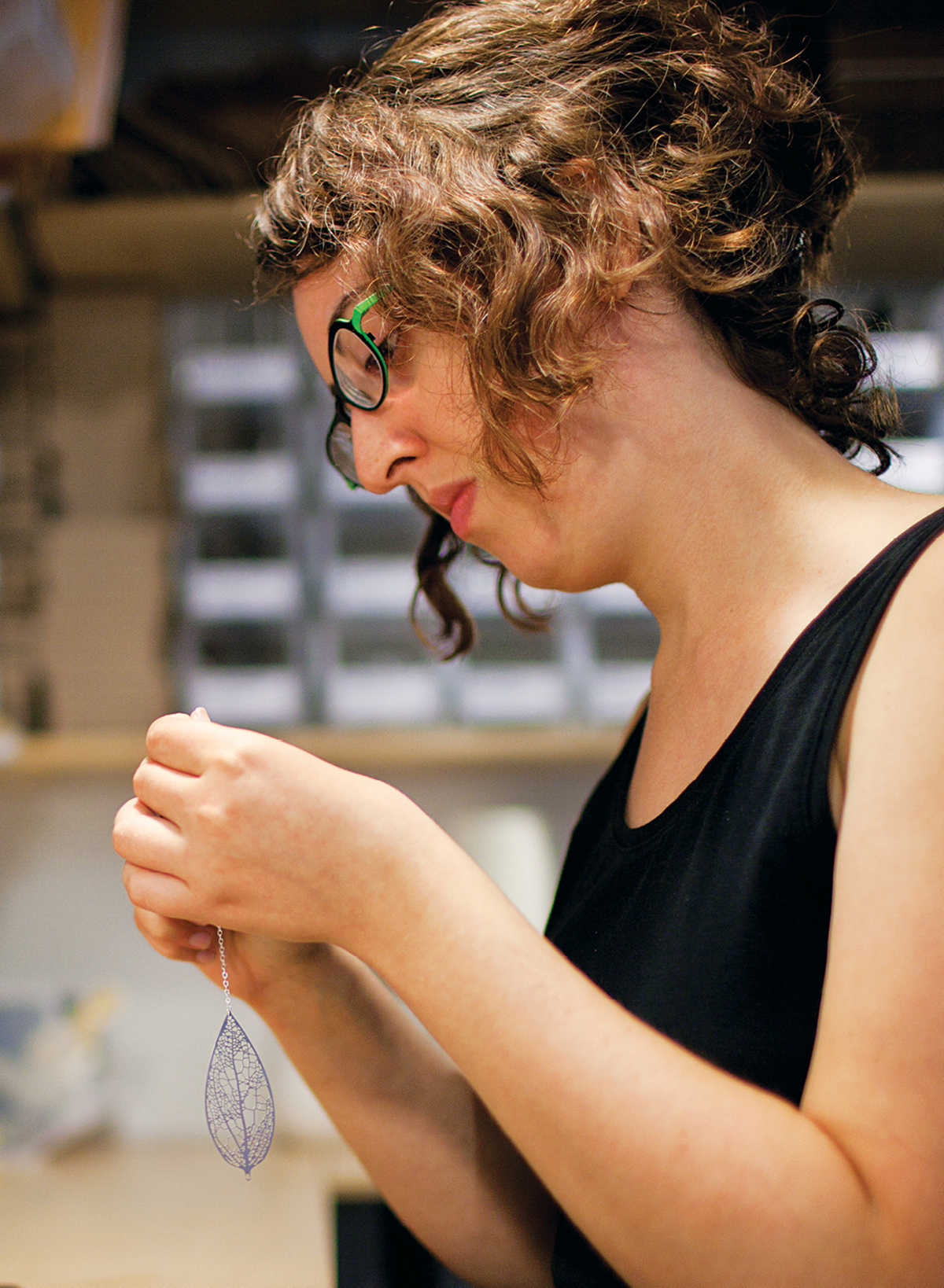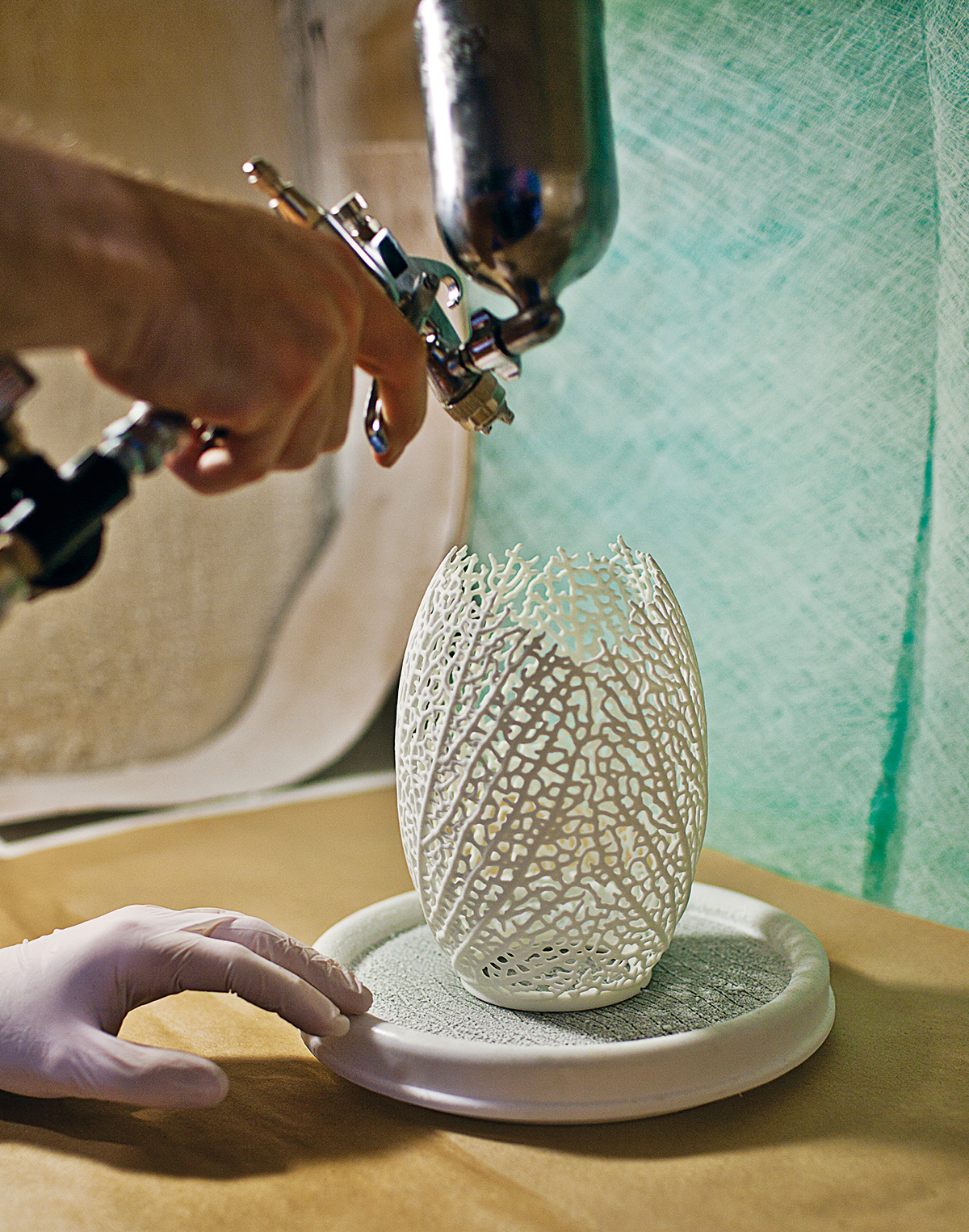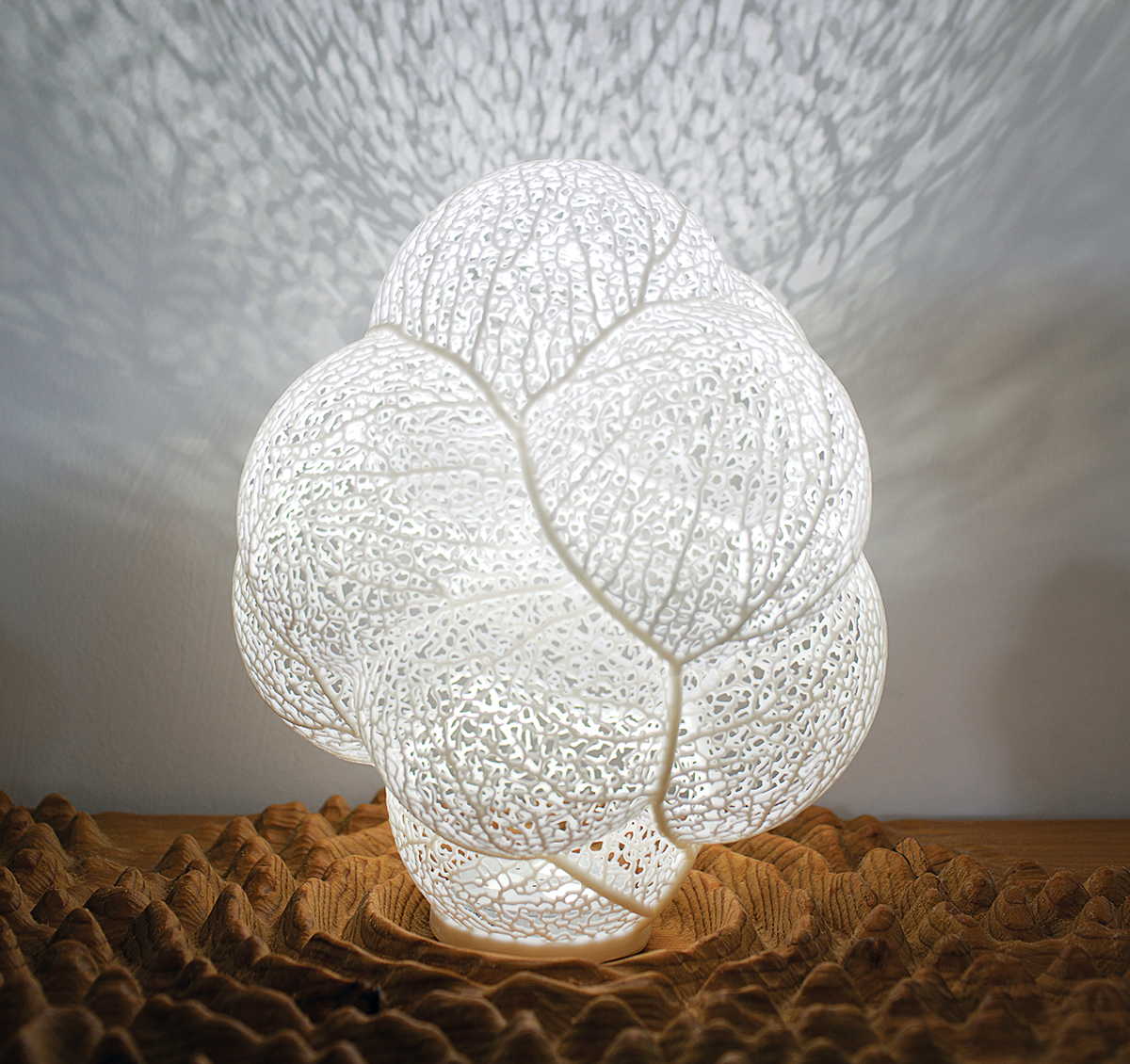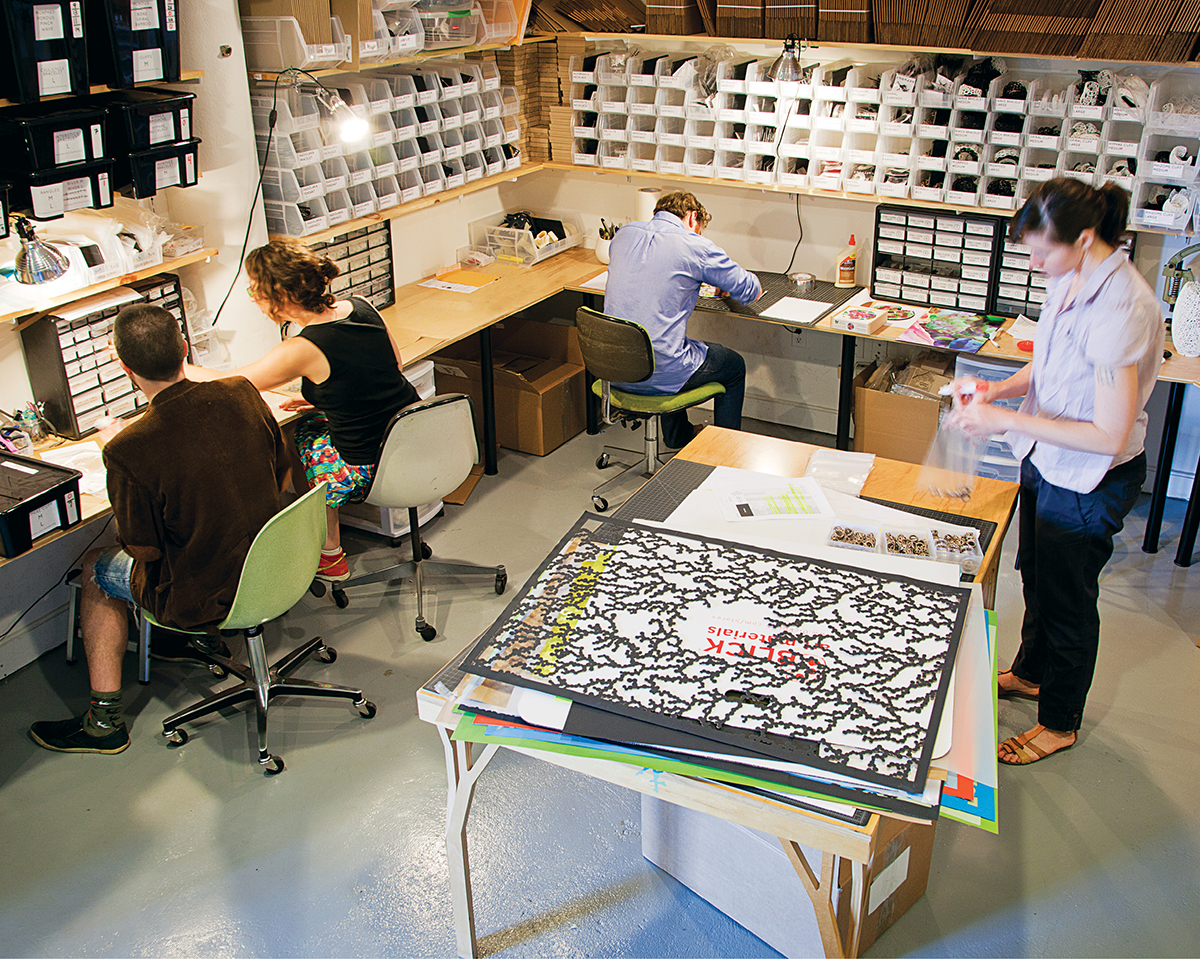The Artisan Next Door: Geek Chic
A three-dimensional ceramic sculpture prototype by Nervous System.
In their Somerville workshop, Nervous System cofounders Jessica Rosenkrantz and Jesse Louis-Rosenberg are flipping through the pages of a sizable wholesale catalog in search of a picture from their first jewelry collection. Finally, they find it: a bracelet based on a fragment of an architectural model Rosenkrantz built in 2006 while pursuing her degree at Harvard’s Graduate School of Design. “It was a flat, cellular piece of paper that was sitting on my desk, and it sort of curled up like this,” Rosenkrantz says, mimicking the curved shape with her hand. When a fellow student asked her if she was making jewelry, it got her thinking. Couldn’t she easily laser cut something similar out of plastic to wear?
Six years later, Rosenkrantz and Louis-Rosenberg are offering 140 designs through their company, Nervous System bangles, necklaces, brooches, rings, and more, inspired by natural phenomena or patterns found in nature. The “Dendrite” jewelry line, for example, features a delicate stainless steel construction resembling branches of coral. “Everything starts with us writing some sort of computer program or code,” Rosenkrantz says, “and that program either generates [patterns] on its own, or with some amount of interaction from us.” Once a pattern is approved, it’s either 3-D printed, laser cut, or photochemically etched onto materials like nylon or stainless steel and finished by hand in Nervous System’s Somerville studio.
Rosenkrantz and Louis-Rosenberg, who met while undergrads at MIT in 2004, say they’re still surprised at the direction their careers have taken. “If someone said I would be a designer when I first entered college, I would have thought they were absurd,” Louis-Rosenberg says. “Though to be honest, I still don’t think of myself as a designer, but a combination of many roles: scientist, programmer, maker, artist, designer.” He’s all smiles as he bounces around the studio barefoot, while Rosenkrantz is more reserved. Both, however, are enthusiastic about geek culture. “I’m very interested in complex systems and understanding how we can describe them with a small set of rules that have extremely complex behavior,” he says, “and Jessica’s really interested in using some of those ideas from biology and design. And then we sort of accidentally started making jewelry.”
Rosenkrantz and Louis-Rosenberg’s newest lines include tabletop lighting and one-of-a-kind jigsaw puzzles. Their entire collection is available on the Nervous System website (n-e-r-v-o-u-s.com), as well as at the ICA and MFA gift shops, techy Cambridge store Xylem, and Room 68 in Jamaica Plain. Madalane Sullivan, owner of Xylem, says her customers understand Nervous System’s work instantly: “I’m in the heart of Kendall Square, so a lot of people who work nearby are more scientific than the average person and really respond to it.”
What’s next for the pair? “There are a lot of possibilities we are pursuing,” Louis-Rosenberg says. “We’d like to make more lighting and larger-scale furniture. We also want to branch outside of the product space. We’re interested in architectural applications as well as more experimental installations exploring interactivity, natural patterns, and design.”
Above, Jessica Rosenkrantz works on her computer in Nervous System’s bright showroom, surrounded by props and layouts for the company’s new catalog. The cellular compartments on the wall, built entirely in house, display an assortment of jewelry.
Above, Jesse Louis-Rosenberg and Rosenkrantz at work.
Louis-Rosenberg sprays the nylon base of the Hyphae lamp with a UV-resistant acrylic coating. Each piece is entirely unique, created by a program that simulates the vein formation of leaves.
Nervous System’s Orbicular lamp sits atop the Reaction table, made using a computer-controlled router built by Louis-Rosenberg.
The team puts together stainless steel jewelry and puzzles in the assembly and shipping room, where floor-to-ceiling storage bins organize ready-to-ship items.
THE MAKING OF A PUZZLE
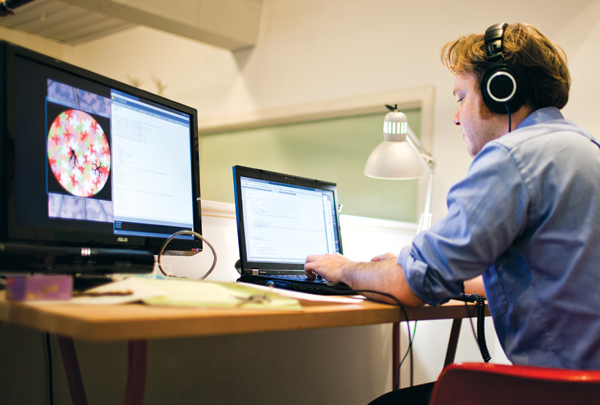
Photograph by Ken Richardson
1. Art Selection
Louis-Rosenberg preps the work of graphic artist Jonathan McCabe for printing.
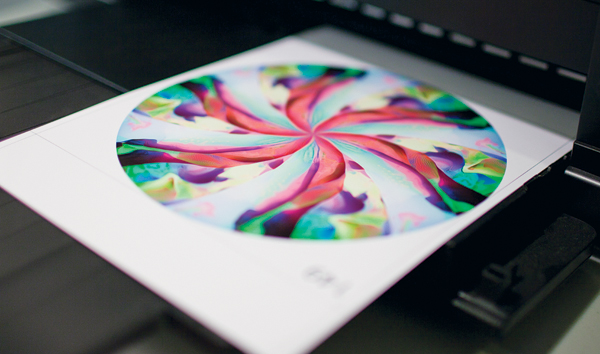
Photograph by Ken Richardson
2. Printing
The art is then transferred onto archival paper, coated with a protective finish, and glued to plywood.
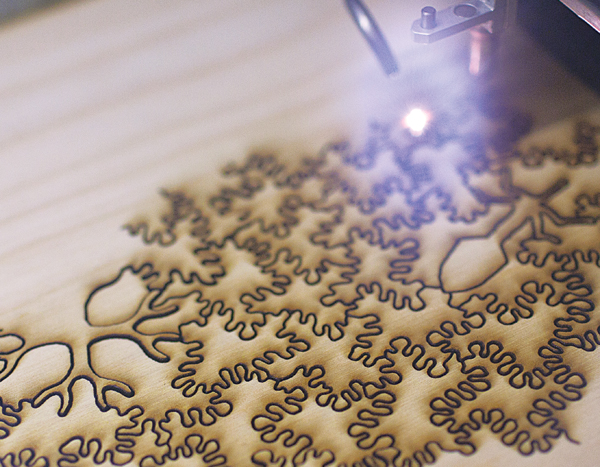
Photograph by Ken Richardson
3. Laser Cutting
Next, Nervous System’s custom software generates puzzle patterns that are laser cut into the plywood.
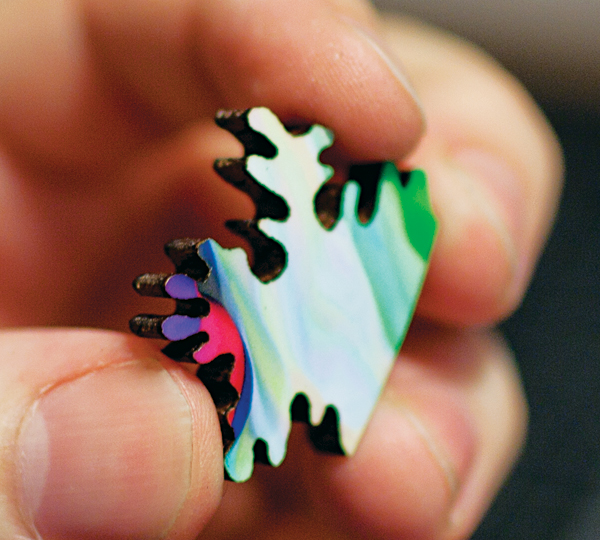
Photograph by Ken Richardson
4. The Design
This pattern is based on the process of dendritic solidification, similar to how snowflakes form.
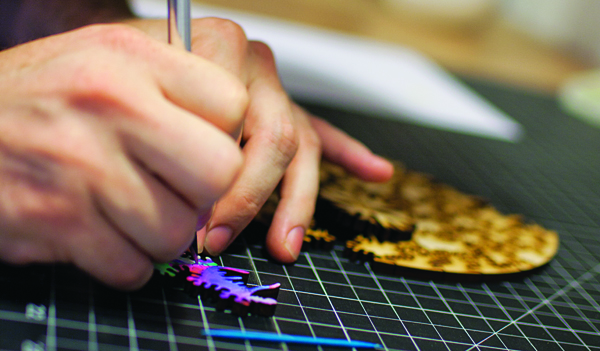
Photograph by Ken Richardson
5. Quality Control
Each puzzle piece is checked for defects before it’s packaged up and shipped.

Photograph by Ken Richardson
6. Final Take
Combining a kaleidoscopic image with challenging shapes creates an extremely difficult puzzle to solve.
